
Self-guided walkthru of the grounds at Pitt Community College's Horticulture green house.
- Subject:
- Agriculture
- Agriculture & Natural Science
- Material Type:
- Simulation
- Date Added:
- 06/01/2021

Self-guided walkthru of the grounds at Pitt Community College's Horticulture green house.

The resource "Control Valve Actuators" is included in the Process Control topic of the EICC Engineering Techology Simulations resource series. This series is segment of a Department of Labor grant awarded to the Eastern Iowa Community Colleges (EICC) of Clinton, Muscatine, and Scott.

DSOKids is the Dallas Symphony Orchestra's magical doorway to a world of musical fun and learning for students, parents and teachers. The site's mission is to provide attractive, accessible and child-friendly resources that introduce symphonic music, the orchestra and its instruments, and to encourage both adults and young people to explore the world of the symphony orchestra.
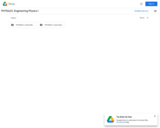
This course covers the major topics of mechanics, including momentum and energy conservation, kinematics, NewtonŰŞs laws and equilibrium. The major emphasis is to develop critical analysis, problem solving and scientific reasoning skills by considering numerous different systems and interactions, solving problems and discussion. It uses a systematic approach based on modeling systems by application of basic physics principles, making assumptions, utilizing multiple representations (not just mathematical) in order to become proficient at problem solving. Lab work is required and is designed to help students develop a questioning approach to physical situations, distinguishing the significant behaviors from the less significant behaviors of a system under study.Login: guest_oclPassword: ocl
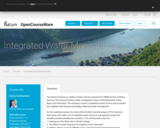
The lectures introduce a number of topics that are important for IWRM and the modeling exercise. The lectures introduce water management issues in the Netherlands, Rhine Basin, and Volta Basin. The role-play is meant to experience some of the social processes that, together with technical knowledge, determine water management.
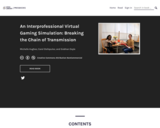
This virtual simulation promotes the application of knowledge and skills related to interprofessional collaboration and infection prevention and control practices. Learners will need a foundational knowledge in infection prevention and control practices, including routine practices and additional precautions guidelines. Learners will use their assessment and communication skills throughout the game. By the end of the virtual gaming simulation, learners will be able to apply interprofessional communication skills to foster collaboration and provide safe client care, demonstrate knowledge and skills related to infection prevention and control practices, and identify high risk areas to break the chain of transmission.
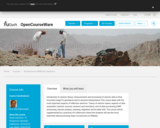
Introduction to seismic theory, measurements and processing of seismic data to final focussed image for geological and/or physical interpretation.This course deals with the most important aspects of reflection seismics. Theory of seismic waves, aspects of data acquisition (seismic sources, receivers and recorders), and of data processing (CMP processing, velocity analysis, stacking, migration) will be dealt with. The course will be supplemented by a practical of 6 afternoons where the students will see the most important data-processing steps via exercises (in Matlab).
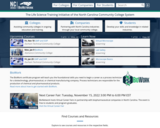
BioNetwork provides high-quality economic and workforce development for the biotechnology and life science industries across North Carolina through education, training, and laboratory resources.
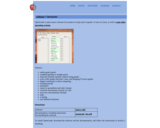
OpenGrade is open-source software for teachers to keep track of grades. It runs on Linux, as well as some other operating systems.
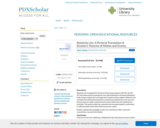
Relativity Lite is designed to accompany the main text in a course like General Astronomy, Physics for Poets, Learning Science Through Science Fiction, and Natural Science Inquiry. Relativity Lite was written for math-phobic students, so it translates the mathematical equations conventional relativity texts rely upon into pictures that are readily understood and contain within them the mathematical essentials. This book provides the comprehensive coverage needed to understand, in sufficient depth, Special Relativity, General Relativity, and Cosmology.
The site also includes an emulator that is able to run the Mac OS9 application RelLab on Intel macs or Windows machines, so that one can see how the Twin Paradox, the Barn and Plane Paradox, acceleration, and even user-designed scenarios play out.
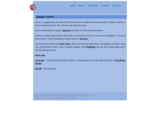
Spotter is a program that lets students check their answers to math and science questions. It handles symbolic as well as numerical answers. The software is free and open source.
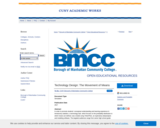
In order to promote students’ conceptual understanding and learning experience in introductory statistics, a technology task, which focuses on the probability distribution in which means are defined, was created using TinkerPlots, an exploratory data analysis and modeling software. The targeted audiences range from senior high school grade levels to college freshmen who are starting their introductory course in statistics. Students will be guided to explore and discover the movement behaviors of means of a set of numbers randomly generated from a fixed range of values characterized by a predetermined probability distribution. The cognitive, mathematical, technological and pedagogical natures of the task, as well as its association with the statistics education framework based on the Guidelines for Assessment and Instruction in Statistics Education (GAISE) by the American Statistical Association, will be elaborated. A brief discussion on what cognitive design principles this task satisfies will also be provided at the end.
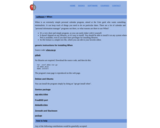
When is an extremely simple personal calendar program, aimed at the Unix geek who wants something minimalistic. It can keep track of things you need to do on particular dates.